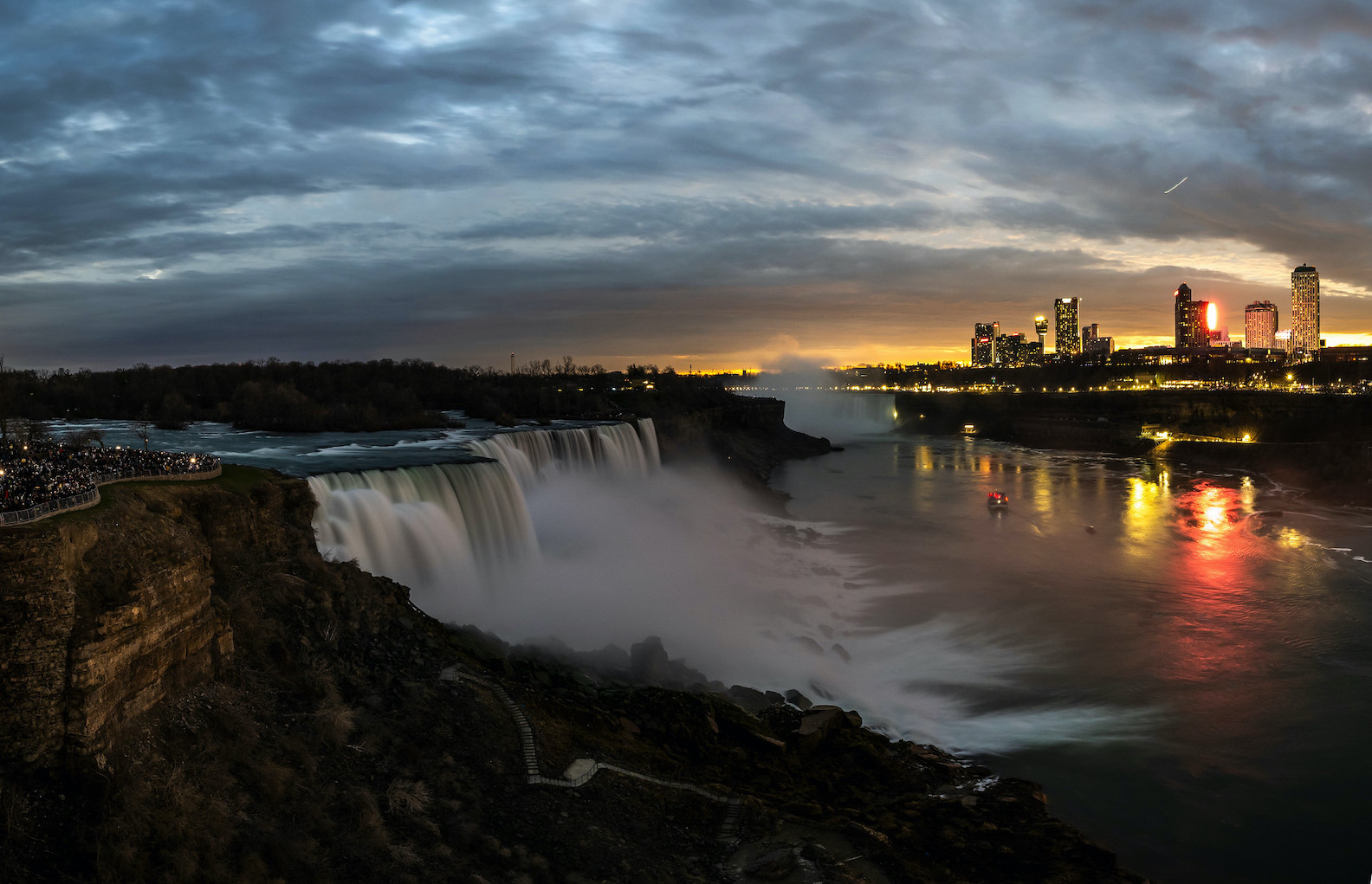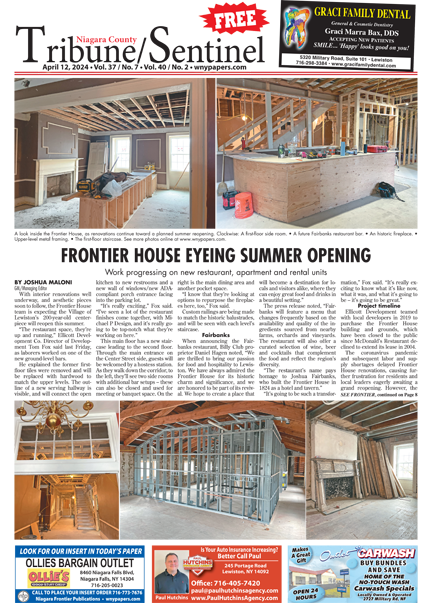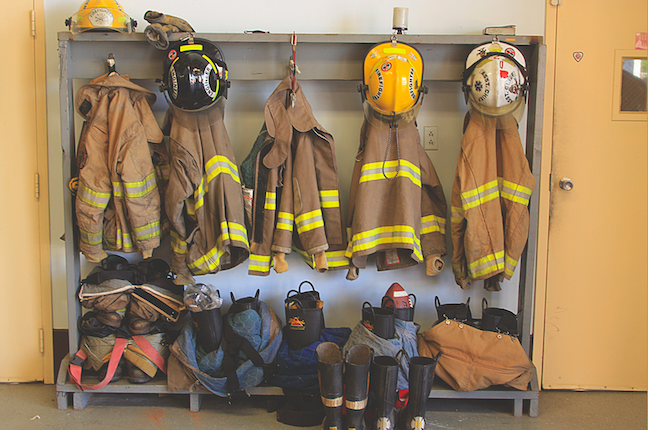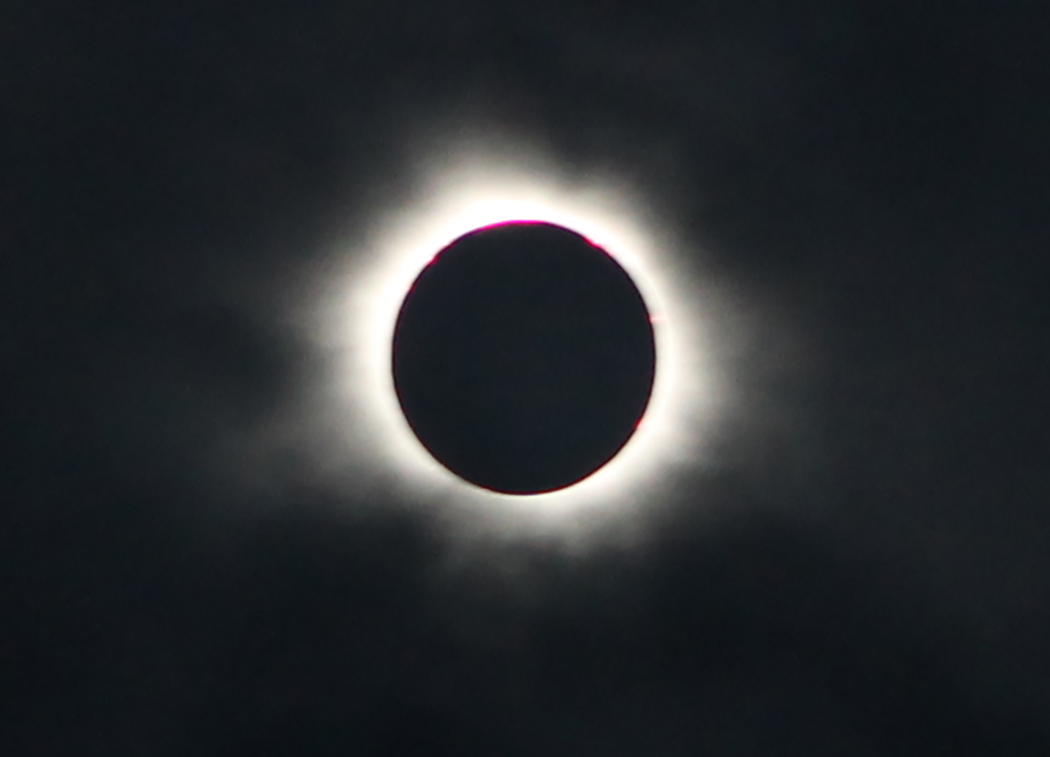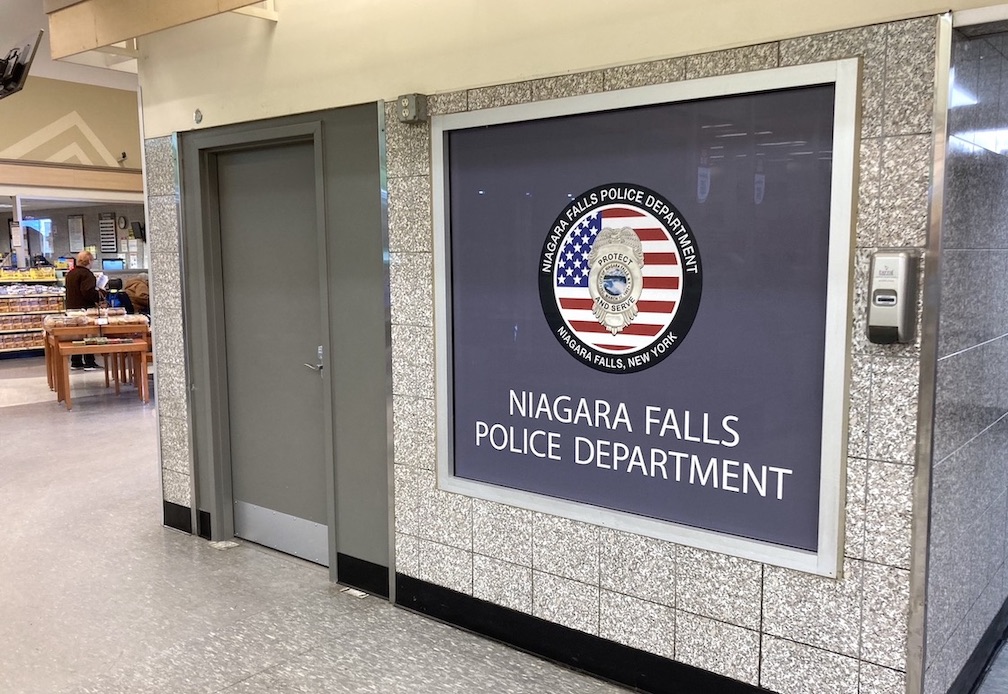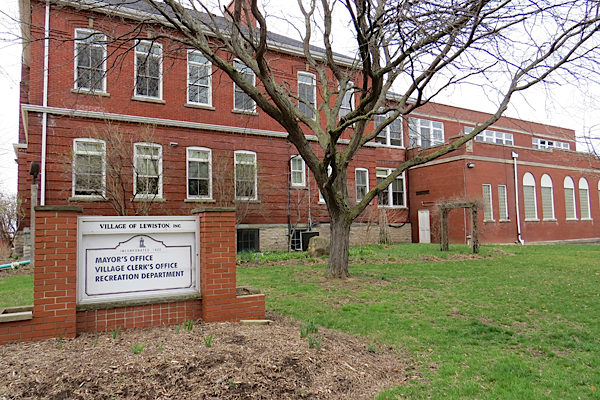Featured News - Current News - Archived News - News Categories
Heavy rain & snow, strong winds, coastal and lakeshore flooding, flash freezing, extremely low wind chills and power outages all possible over next several days as winter storm moves across state
√ Beginning 6 a.m. Friday: Full commercial vehicle ban on NYS Thruway (I-90) between Exit 46 (Rochester, I-390) and Pennsylvania border, soft closures on interstates and state highways in Western New York
√ New York's utilities surging additional 2,200 external workers to respond to the storm; state assets and personnel ready to deploy to impacted areas
Gov. Kathy Hochul on Thursday declared a state of emergency for the entire state of New York in advance of a significant winter weather system forecast to bring a mixed bag of hazards across the state beginning Thursday evening and continuing through Monday.
Her team said, “Heavy rain and snow, strong winds, coastal and lakeshore flooding and flash freezing are all possible in various regions across the state throughout the holiday weekend. In addition, lake-effect snow is expected to impact areas along Lakes Erie and Ontario beginning Friday night and continuing into Monday with total snow accumulations forecast to reach up to 3 feet.”
Hochul said, "With Mother Nature throwing everything she has at us this weekend, I encourage New Yorkers who are considering travelling for the holidays to do so before Friday or after Sunday to stay safe. Our agencies are well prepared, coordinated and ready to deploy assets and equipment if needed to respond to the storm. We want all New Yorkers to get where they need to go safely to celebrate the holidays with loved ones."
Thursday into Friday, rain, snow showers and strong winds are forecast for most of the state, with rainfall amounts of up to 3 inches possible in some places. Moderate to major coastal flooding (1 to 2 feet) is possible Friday morning due to rain and strong winds, and lakeshore flooding up to 3 feet above flood stage is possible off Lake Erie and Lake Ontario due to rain, snowmelt and strong winds.
Starting Friday and continuing into Saturday morning, much of the state is expected to see strong winds up to 60 miles per hour or more, as temperatures will drop quickly and significantly – by more than 35 degrees in some regions – causing flash freezing, below-zero wind chills and icy road conditions. This will impact the Friday morning commute in Western New York and the evening commute for the rest of the state. Winds on Friday and Saturday will be strong enough to cause downed trees and power lines.
Friday night and continuing through Monday, lake-effect snow will impact areas off Lake Erie and Lake Ontario, and strong winds are expected to cause blowing and drifting snow with near-zero visibility and localized blizzard conditions. The Buffalo and Watertown areas could see up to 3 feet of snow through Sunday night. Below-normal, freezing temperatures with low wind chills are expected to persist through Monday for upstate regions.
Hochul urged New Yorkers to take all necessary precautions, if traveling this week, and plan ahead for significant weather impacts.
Blizzard warnings, coastal flood warnings, lakeshore flood warnings, high wind warnings, wind chill warnings and winter storm warnings are all in effect this weekend throughout various counties across the state. For a complete list of weather watches, warnings and advisories across New York, visit the National Weather Service website.
New York State Division of Homeland Security and Emergency Services Commissioner Jackie Bray said, "The timeline for this storm has moved up. If you are planning to travel this weekend do everything you can to travel tonight instead or wait until Sunday morning. Please, avoid travel on Friday and Saturday given the conditions most of the state will face. In addition to hazardous roads, strong winds will likely cause power outages. Be prepared for the possibility of losing power."
Agency Preparations
•The New York State Division of Homeland Security and Emergency Services began coordinating state agency response operations and contacted local governments earlier this week ahead of weather impacts to ensure preparedness. The state's emergency operations center will be opening Friday morning.
The Office of Emergency Management is working with Erie County to prestage chainsaws and generators, and deploying sandbags to the U.S. Coast Guard in Buffalo to protect against potential lakeshore flooding. The Office of Fire Prevention and Control has equipment and personnel available to assist with mutual aid requests.
Across the state's 10 stockpiles, DHSES has the following deployable items to support storm-related needs:
•Department of Public Service: In preparation for this week's statewide winter weather event the New York utilities have approximately 7,700 workers available statewide to engage in damage assessment, wire guarding, response, repair and restoration efforts.
This includes:
DPS staff will track utilities' response, repair and restoration work throughout the event and ensure utilities shift appropriate resources to regions that experience the greatest impact.
•The State Department of Transportation is monitoring weather conditions and is prepared to respond with 3,450 supervisors and operators. Additionally, 75 ICS personnel are available to support the response to this event. All affected residency locations will be staffed for 24/7 operation throughout the duration of the event. Staff can be configured into any type of response crew that is needed such as snow and ice, flood, chipper, load and haul, cut and toss, traffic signal, etc. All available equipment is ready to deploy.
The State Department of Transportation is preparing to close the following roads in Erie County to all traffic starting at 6 a.m. Friday until conditions improve:
A restriction for trucks "Trucks Use Right Lane" on Interstate 81 from Exit 32 (Central Square) to Exit 51 (Alex Bay) starting at noon Friday.
Regional crews are currently engaged in all-hazards preparations. Drainage structures are being checked and cleared of debris. To support response activities in critical areas, a total of 65 staff, including 59 plow truck operators, four supervisors, one assistant manager, one ICS support specialist, 10 plow trucks, two snowblowers, and one grader are being deployed to Western New York. They are distributed as follows:
The need for additional resources (operators, trucks, mechanics, EOIs) will be reevaluated as conditions warrant throughout the event. Generator stockpiles are being readied for deployment to support dark signal response. Fleet mechanics in affected areas will be staffing all main residency locations 24/7 to perform repairs and keep trucks on the road. Statewide equipment numbers are as follows:
For up-to-date travel information, call 511, visit 511NY.org or download the free 511NY mobile app.
•Thruway Authority personnel are staffed around the clock and ready to respond to the storm with 678 operators and supervisors statewide. Thruway has shifted and deployed additional staff and equipment from its New York and Albany divisions to support snow and ice operations in the potentially hardest-hit areas in Western New York. Deployed resources include operators and supervisors, and large plow trucks.
Beginning at 6 a.m. Friday, all commercial vehicles will be banned on the New York State Thruway (I-90) from Exit 46 (Rochester I-390) to the Pennsylvania border, and the Niagara Thruway from I-90 to Exit 22 (Route 62).
Thruway statewide equipment numbers and resources are listed below:
Variable message signs and social media are utilized to alert motorists of winter weather conditions on the Thruway.
The Thruway Authority encourages motorists to download its mobile app, which is available for free on iPhone and Android devices. It said the app provides motorists direct access to real-time traffic information, live traffic cameras, and navigation assistance while on the go. Motorists can also sign up for TRANSalert emails, which provide the latest traffic conditions along the Thruway.
•The New York State Police will assign extra patrols to areas that are significantly impacted by the storm. All four-wheel drive and specialty vehicles are in service, including utility task vehicles and snowmobiles.
•Department of Environmental Conservation: DEC environmental conservation police officers, forest rangers, emergency management staff and regional staff are on alert and monitoring the developing situation and actively patrolling areas and infrastructure impacted by severe weather. DEC is coordinating resource deployment with agency partners and all available assets are positioned to assist with any emergency response.
Hochul’s team said, “DEC is advising backcountry users to be aware of and prepared for winter conditions. Winter hiking and skiing safety and preparedness are extremely important no matter your physical ability or destination. Properly preparing for winter conditions is essential for a more enjoyable and safer experience. During and immediately following periods of heavy snowfall, avoid open, exposed areas like bare summits and use extreme caution when traveling on or near open slopes.” Additional information is available here.
DEC reminds those responsible for the large-scale removal and disposal of snow “to follow best management practices to help prevent flooding and reduce the potential for pollutants like salt, sand, oils, trash and other debris in snow from affecting water quality. Disposal of snow in local creeks and streams can create ice dams, which may cause flooding in nearby areas. Public and private snow removal operators should be aware of these safety issues during and after the storm.” Additional information is available here.
•Office of Parks, Recreation and Historic Preservation: New York State Park Police and park personnel are on alert and closely monitoring weather conditions and impacts. Seven sawyer crews are on standby to assist with clearing downed trees and branches from roadways. Park visitors should check parks.ny.gov or call their local park office for the latest updates regarding park hours, openings, and closings.
•The New York Power Authority and the Canal Corp. staff are performing preparations to ensure all facilities, assets and equipment are secured and ready. The Power Authority is prepared to support power restoration activities if needed.
Safety Tips – Winter Travel Safety
Per Hochul’s team:
The leading cause of death and injuries during winter storms is transportation accidents. Before getting behind the wheel, review these safety tips:
√ When winter storms strike, do not drive unless necessary.
√ Make sure that your vehicle is clear of ice and snow; good vision is key to good driving.
√ Always match your speed to the road and weather conditions. Plan your stops and keep more distance between cars.
√ Be extra alert and remember that snowdrifts can hide smaller children.
√ Make sure your car is stocked with survival gear like blankets, a shovel, flashlight and extra batteries, extra warm clothing, set of tire chains, battery booster cables, quick energy foods and brightly colored cloth to use as a distress flag.
√ If you have a cell phone or other communications device such as a two-way radio available for your use, keep the battery charged and keep it with you whenever traveling.
Cold Weather Safety
√ Be aware of wind chill – wind in combination with the actual temperature – that can cause an increase of heat loss to the human body.
√ Dress appropriately and avoid staying in the cold too long.
√ Wear a hat and gloves when appropriate with layers of clothing. Avoid unnecessary exposure of any part of the body to the cold.
√ Drink plenty of warm fluids or warm water but avoid caffeine and alcohol. Stay active to maintain body heat.
√ Take frequent breaks from the cold.
√ If signals of hypothermia or frostbite appear, get out of the cold, slowly warm the individual and seek medical assistance. Frostbite symptoms include loss of feeling, a white or pale appearance in fingers, toes, ears, and nose. Hypothermia symptoms include uncontrollable shivering, slow speech, memory lapses, frequent stumbling, and drowsiness.
Heavy Exertion
Heavy exertion, such as shoveling snow, clearing debris or pushing a car, increase the risk of a heart attack. Follow these tips to stay safe after the storm:
√ Stay warm, dress warm and slow down when working outdoors.
√ Take frequent rests to avoid over-exertion
√ If you feel chest pain, shortness of breath, or pain in your jaw radiating down your arm – stop and seek help immediately.
Power Outages
Winter storms can cause power outages. Review these safety tips before the lights go out so you know what to do in an emergency:
√ Call your utility provider to notify them of the outage.
√ Avoid all downed power lines and report them to your utility provider for repair; assume all downed lines have live electricity.
√ Use only flashlights for emergency lighting – candles pose the risk of fire.
√ Keep your refrigerator and freezer doors shut to keep food from spoiling. When in doubt, throw it out!
√ Do not use a charcoal grill or generator indoors and do not use a gas stove for heat – they could give off harmful levels of carbon monoxide.
√ Turn off major appliances to prevent damage from a possible surge when the power comes back on-keep one light turned on so you know when power returns.
Home Heating
Heating equipment is one of the leading causes of home fire deaths. Keep loved ones safe by following these important steps:
√ Keep all combustibles at least 3 feet away from heating equipment.
√ Always plug appliances including space heaters directly into a receptacle. Never plug appliances into a power strip or extension cord.
√ Make sure there is a working smoke alarm in each bedroom, outside sleeping areas and on every level of your home.
For all non-emergency service needs before, during or after a storm, call 211 or visit 211nys.org.
For more safety tips, visit the New York State Division of Homeland Security and Emergency Services Safety Tips web page at www.dhses.ny.gov/safety.













